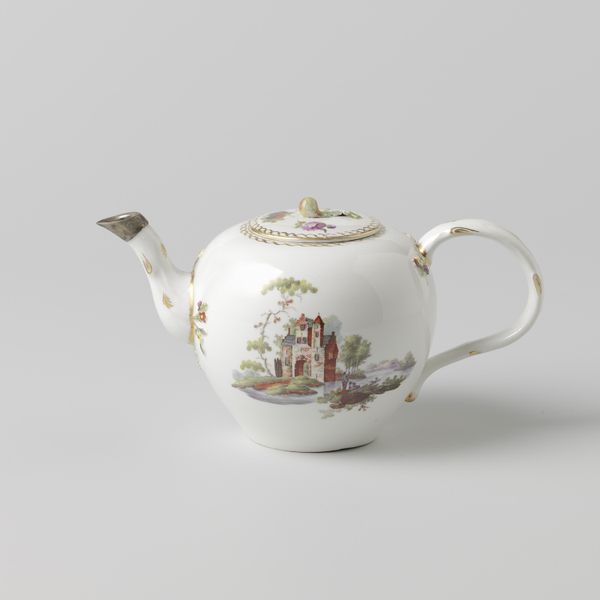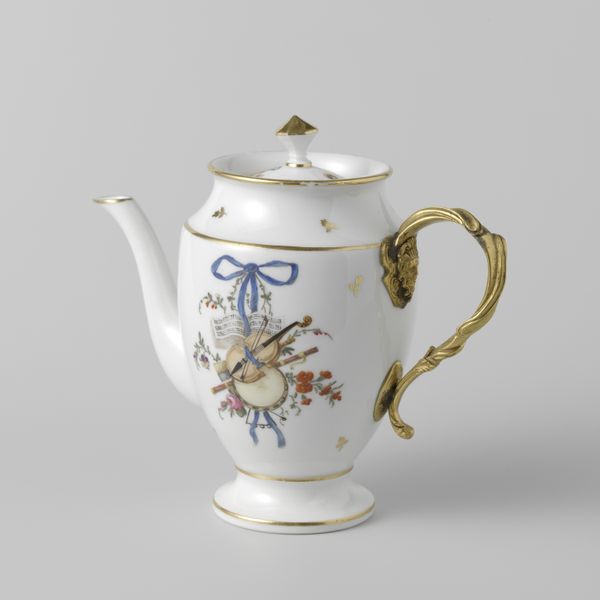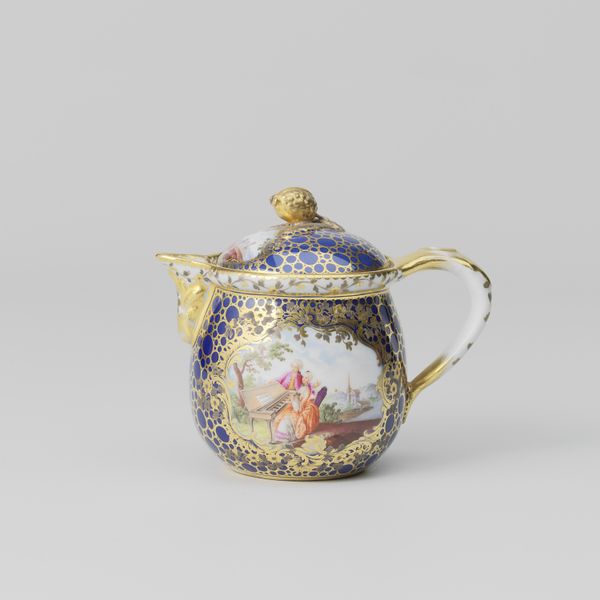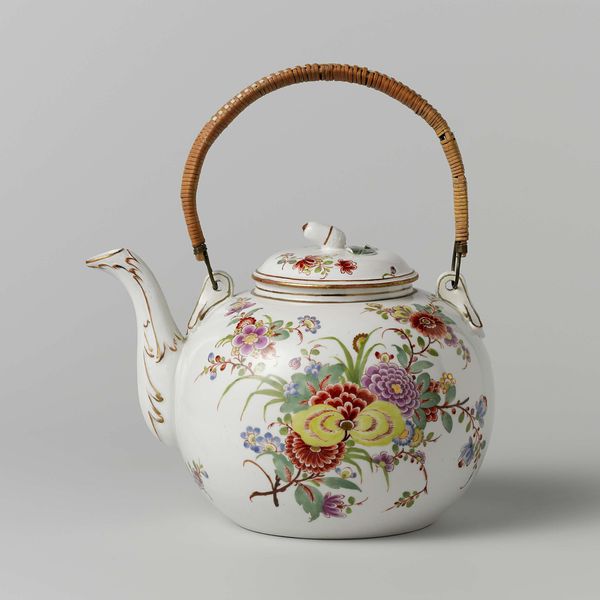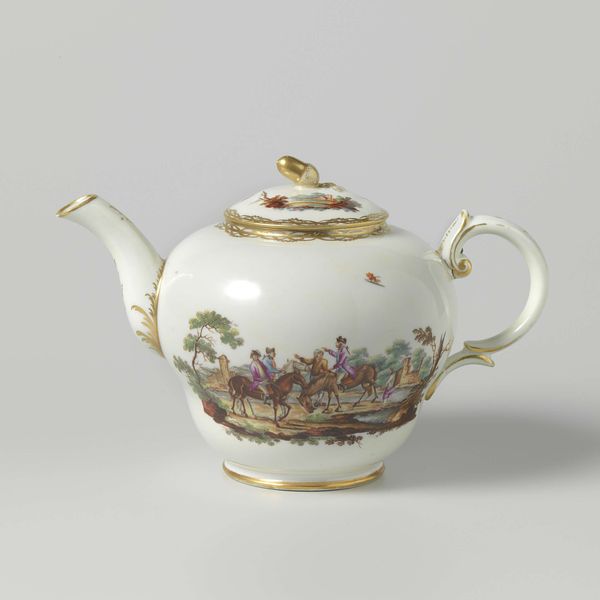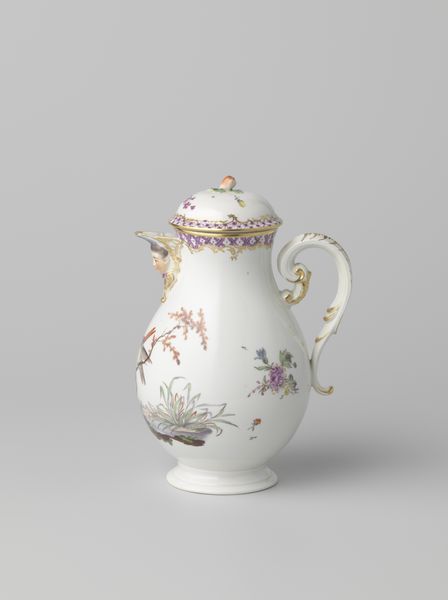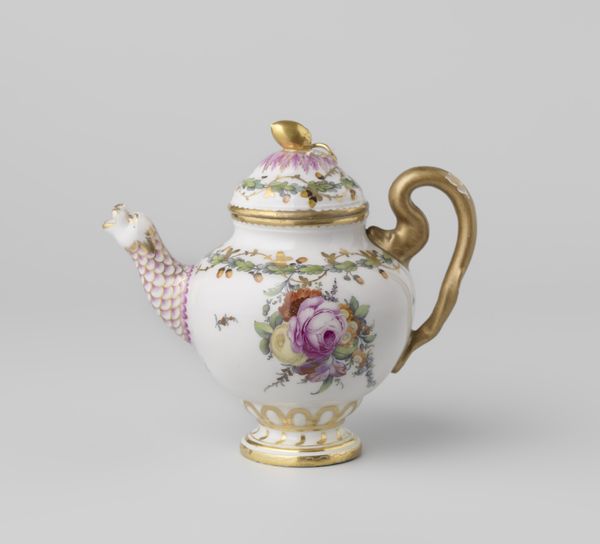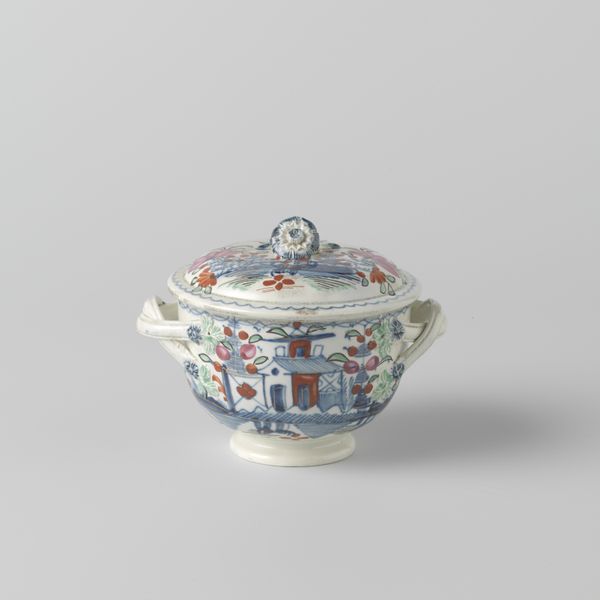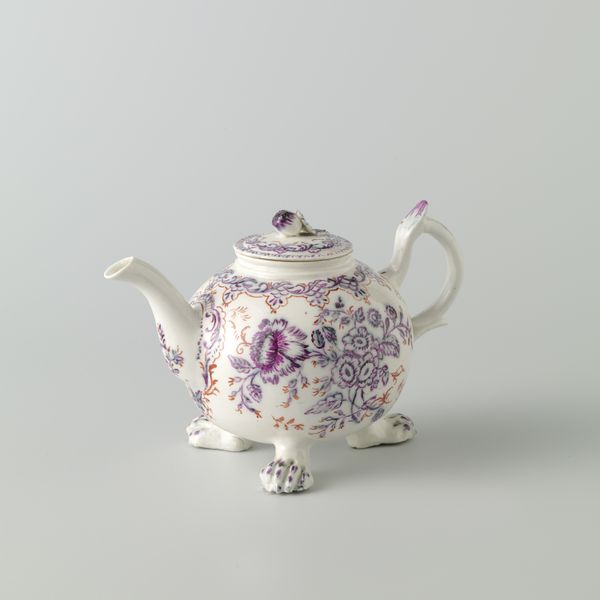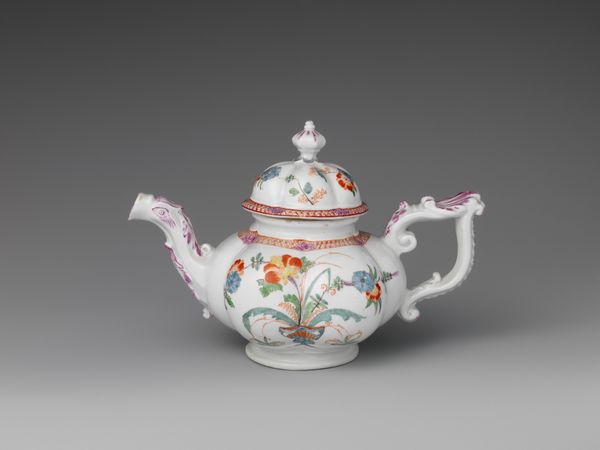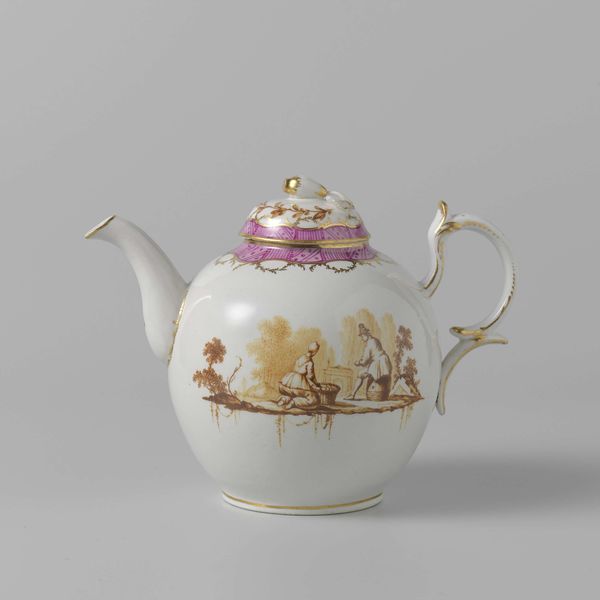
Dimensions: height 9.5 cm, depth 11.2 cm, width 18.2 cm, diameter 7 cm
Copyright: Rijks Museum: Open Domain
Editor: Here we have a creamware teapot, crafted in Leeds around 1770 to 1790. It’s made of earthenware and is just stunning, especially the almost fairytale-like decoration. How do we place something like this in its historical moment? Curator: The popularity of pieces like this reveals a great deal about the cultural landscape of the time. What visual cues do you notice, and what might they suggest about British society then? Editor: Well, there’s this unmistakable Chinoiserie design—pagodas, stylized flowers. It feels very… borrowed. Curator: Exactly. The British elite at this time were captivated by the East. Think about the East India Company's role and the influx of goods. This teapot is participating in a fantasy, wouldn't you agree? Editor: Yes, definitely a romanticized view! So, it’s less about actual Eastern culture and more about British interpretation and consumption. Would these have been used or were they mostly decorative? Curator: Excellent question! Objects like this blurred the lines. Their function speaks to an increasingly refined culture of tea drinking, now accessible to a wider bourgeois public. But the ornate decoration also signifies status. What are your thoughts? Editor: It's a beautiful, useful piece that also acted as a status symbol! A visual marker within an emerging middle class, keen to emulate the upper classes' tastes. Curator: Precisely. This humble teapot, therefore, opens a window into complex social dynamics. We're examining a society grappling with newfound global connections and redefining itself through material possessions. Editor: I hadn't considered it in light of the British social landscape. Thinking about its creation as a marker of status really shifts how I see it. Curator: Indeed. Context enriches our viewing experience. Art never exists in a vacuum.
Comments
No comments
Be the first to comment and join the conversation on the ultimate creative platform.
